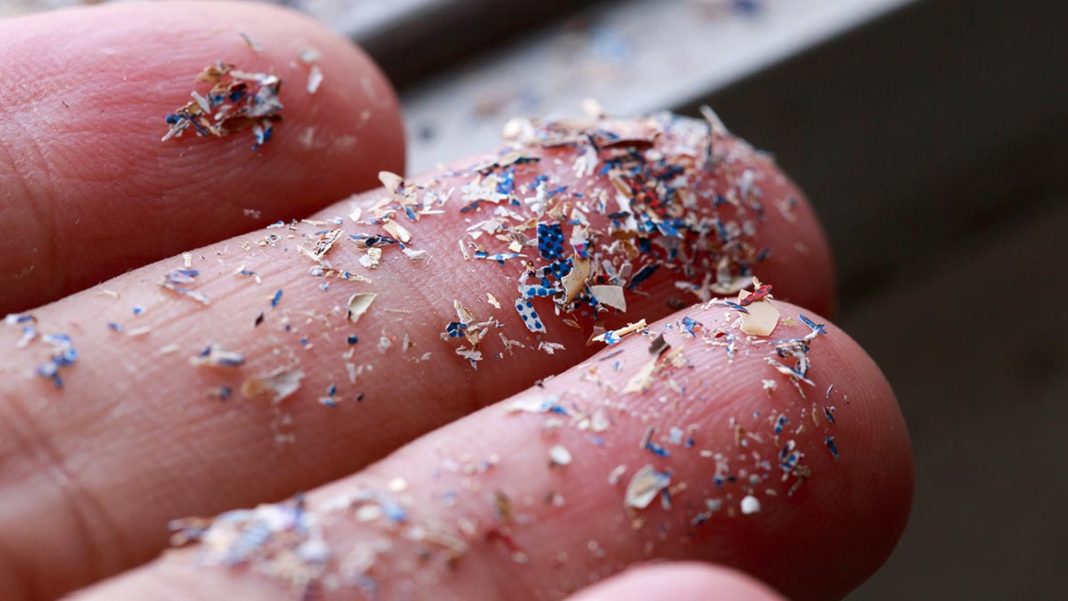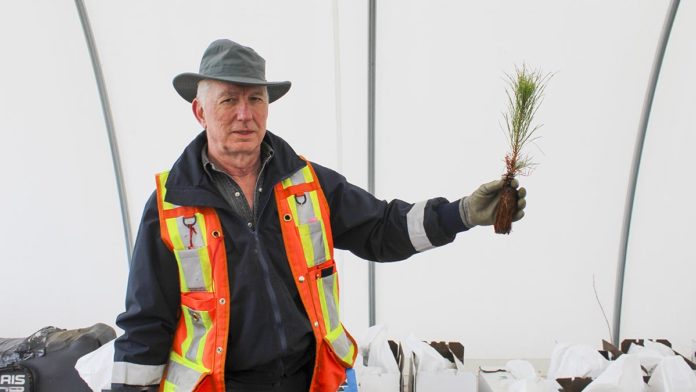GODERICH—Microplastics were found in 83.3 percent of Lake Huron water samples collected by Coast Watchers in 2021. Coast Watchers is a program of the Lake Huron Coastal Centre (LHCC) and has been in operation since 2005, analzying water samples for microplastics since 2018. That first year they found microplastics in 95.7 percent of the samples collected. The trend is not generally going down, said Alyssa Bourassa, coastal stewardship technician at the centre.
Of the microplastics found, microfibres were the most common microplastic in both years sampled. This was expected, Ms. Bourassa noted, because microfibres are commonly released from our clothing in washing machines. “If the washing machine does not have a microfilter, they’re usually released into the municipal wastewater system. Since microfibres are 100 times finer than a human hair, most wastewater treatment plants do not have the proper filters to take them out before they’re released into Lake Huron.”
Generally with pollution, the best way to stop it is at the source, she added. “The best way to get rid of microfibres would be to put filters in your washing machine. Studies have proven that does help tremendously.”
A study co-authored by Georgian Bay Forever (GBF), released in November 2021, found that washing machines are a significant source of microfibre waste, with one load of laundry shedding up to a million microfibres, posing a risk for animal health as billions of microfibres make their way into lakes and oceans. Washing machine filters installed in 97 households in Parry Sound captured 6.4 g of lint per week, diverting an estimated 179,000 to 2,707,200 microfibres per week from going down the drain.
“We estimate 934 million to 14.1 billion microfibres were diverted from wastewater treatment plants annually for households in Parry Sound. If we were to scale up to a large city like Toronto (1,179,057 households), then the annual microfibre capture could be more like 12 to 166 trillion,” stated David Sweetnam, executive director of GBF and co-author of the study.
Ontario NDP MPP Jessica Bell (University-Rosedale) introduced Bill 102 (formerly Bill 279) in March to amend the Environmental Protection Act to prohibit the sale of washing machines that are not supplied with a specified microplastics filter. The bill was supported by many organizations including GBF, the Georgian Bay Association, West Carling Association, Zero Waste Hub Toronto and others but was not passed before the legislature was dissolved on May 3 for the provincial election.
Increased awareness is key to reducing microplastics pollution, said Ms. Bourassa. “Even if it’s just getting the word out there that microfibres are real. Just because you can’t see it in the water doesn’t mean they aren’t there. We try to let people know there could be microplastics in the products they use, without them knowing it. Just be aware.”
There has definitely been more plastic pollution in general over the years that Coast Watchers has been in operation, so much so that microplastics is now something that is regularly monitored by volunteers. “There is definitely more plastic and more microplastics we’re finding,” Ms. Bourassa said. “We saw a lot of plastic nurdles (pre-production plastic pellets) wash up recently. There’s always a change in water levels, therefore erosion, but that’s more of a natural change. Lake Huron goes through cycles about every six or seven years.
The Coast Watchers program is looking for more volunteers in the Georgian Bay/Manitoulin Island area. The Microplastic Awareness Project is a subset of Coast Watchers and aims to reduce plastic pollution in Lake Huron as well as increase public awareness about plastic pollution in the Great Lakes. Volunteers are community or citizen scientists who collect data on Lake Huron once a week and submit that data to be analyzed and results shared with the public.
“We have a really good representation of the Canadian side of Lake Huron,” added Ms. Bourassa. “We have over 160 volunteers now. They range all the way from Sarnia to Midland and up into Georgian Bay.”
Coast Watchers volunteers collect data on atmospheric conditions, things like wave height, wave speed, air temperature and water temperature. They complete reports on algae blooms, wildlife including species at risk, human activity on the shorelines and storm damage. The data is submitted through the Coast Watchers app.
Additional volunteers from Georgian Bay and Manitoulin would provide a better representation of what’s happening in Lake Huron, she said. “It’s a very intricate coastline. We have more eyes on the coast, more people out collecting data where there might otherwise be only one monitoring station for weather purposes,” she noted. “Coast Watchers is our longest running program. This will be our 18th monitoring season. That’s really great for a data collection program because, if you know anything about data, the more data you have the better.”
Anyone who is interested can go to their webpage at lakehuron.ca/coastwatchers and look for the training page for the recorded 2022 training session.





